
The meadow brown is a butterfly found in the Palearctic realm. Its range includes Europe south of 62°N, Russia eastwards to the Urals, Asia Minor, Iraq, Iran, North Africa and the Canary Islands. The larvae feed on grasses.
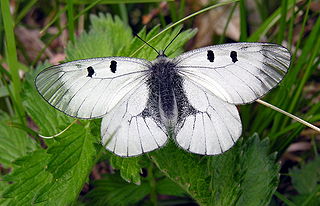
The clouded Apollo is a butterfly species of the family of swallowtail butterflies (Papilionidae) found in the Palearctic realm.
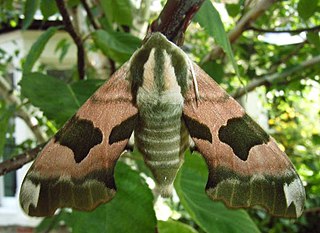
Mimas tiliae, the lime hawk-moth, is a moth of the family Sphingidae. It is found throughout the Palearctic region and the Near East, and has also been identified in Canada's east and western provinces and in northern Spain (Europe). The species was first described by Carl Linnaeus in his 1758 10th edition of Systema Naturae.

The brown hairstreak is a butterfly in the family Lycaenidae. The range includes most of the Palaearctic.
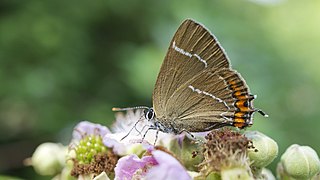
The white-letter hairstreak is a butterfly in the family Lycaenidae.

The black hairstreak is a butterfly in the family Lycaenidae.

The silver-studded blue is a butterfly in the family Lycaenidae. It has bright blue wings rimmed in black with white edges and silver spots on its hindwings, lending it the name of the silver-studded blue. P. argus can be found across Europe and east across the Palearctic, but is most often studied in the United Kingdom in which the species has experienced a severe decline in population due to habitat loss and fragmentation.

The Adonis blue is a butterfly in the family Lycaenidae. It inhabits the Palearctic realm.

The purple-shot copper is a butterfly in the family of the Lycaenidae or copper butterflies and in the genus of the Lycaena.

The scarce copper is a butterfly of the family Lycaenidae.

Satyrium ilicis, the ilex hairstreak, is a butterfly of the family Lycaenidae.

The purple-edged copper is a butterfly of the family Lycaenidae.
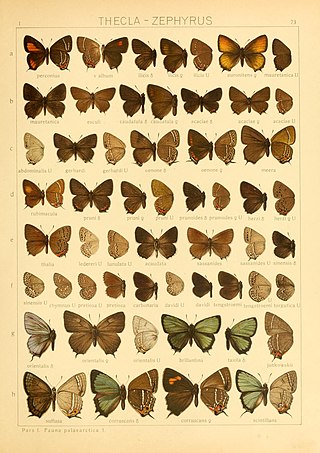
Satyrium ledereri, the orange banded hairstreak, is a butterfly in the family Lycaenidae.

The black arches or nun moth is a small Palaearctic moth. It is considered a forest pest.

Melitaea didyma, the spotted fritillary or red-band fritillary, is a butterfly of the family Nymphalidae.
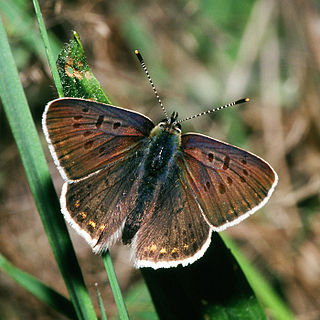
Lycaena tityrus, the sooty copper, is a butterfly of the family Lycaenidae. It is found in Europe.

Polyommatus escheri, Escher's blue, is a butterfly of the family Lycaenidae. It is found in Southern Europe and Morocco.

Agrochola helvola, the flounced chestnut, is a moth of the family Noctuidae. It was first described by Carl Linnaeus in his landmark 1758 10th edition of Systema Naturae. The species is found in most of Europe, north to Scotland and Fennoscandia up to the Arctic Circle, south to Spain, Sicily, Greece further east to the Middle East, Armenia, Asia Minor, western Turkestan and central Asia up to central Siberia.

Polyommatus (Plebicula) dorylas, the turquoise blue, is a butterfly of the family Lycaenidae. It is found in southern Europe, Asia Minor, the Ural Mountains, Caucasus and Transcaucasia. Its wingspan is 15–17 mm. The butterfly's common name comes from the dazzling bright blue colour of male's wings. The larvae feed on Anthyllis vulneraria. The butterfly flies from May to September in two generations. Habitats include flowery meadows in rocky areas at 500–2000 m.

Satyrium favonius, the oak hairstreak or southern hairstreak, is a butterfly of the family Lycaenidae. It is found in the United States from southern New England and the Atlantic Coast south to peninsular Florida and west to central Illinois, south-eastern Colorado and the Gulf Coast.



























